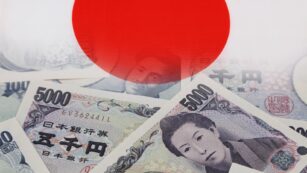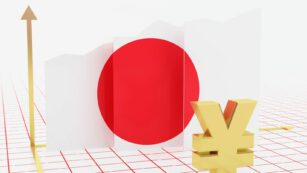
Japan’s economy, the third largest in the world, never fails to make headlines. Whether it’s the country’s trade balance, GDP growth, or fiscal policies, every bit of news holds global significance. Delving into the complexities of Japan’s economy, we’ll explore key indicators, policy changes, and market trends. From the effects of the ongoing pandemic to the country’s ambitious carbon-neutral goals, we’ll dissect how these factors are shaping Japan’s economic landscape. Stay tuned as we unravel the intricate tapestry of Japan’s economic scene, a fascinating blend of tradition and innovation. This is your go-to guide for understanding the economic heartbeat of this Asian powerhouse.
Japan Economic News
 Japan, a globally significant economy, presents perceptive investors with key economic indicators. Insightful observers note GDP (Gross Domestic Product), a major indicator. Japan boasts the third-largest GDP worldwide, only behind the United States and China. Another crucial marker, unemployment rate, stands at an admirable 2.9% in Japan. This figure is comparatively low, serving as testament to Japan’s potent labor market. Inflation rate also provides critical insight.
Japan, a globally significant economy, presents perceptive investors with key economic indicators. Insightful observers note GDP (Gross Domestic Product), a major indicator. Japan boasts the third-largest GDP worldwide, only behind the United States and China. Another crucial marker, unemployment rate, stands at an admirable 2.9% in Japan. This figure is comparatively low, serving as testament to Japan’s potent labor market. Inflation rate also provides critical insight.
As Statista reports, Japan’s inflation rate is projected at 0.5% in 2022, emphasizing the stability of consumer prices. Global trends also exert substantial effects on Japan’s economy. The ongoing pandemic, for instance, has delivered its share of challenges. Japan experienced a negative GDP growth of -4.8% in 2020, according to World Bank. Yet, it’s shown considerable resilience, with a forecasted GDP growth of 2.7% in 2022. Japan’s commitment to climate-related initiatives also shapes its economic landscape. It has set ambitious carbon-neutral goals for 2050.
Government Policies Affecting Japan’s Economy
Fiscal Policies
Fiscal policies in Japan, designed to control the country’s budgetary balances, demonstrate an intricate interplay of revenue generation and expenditure measures. The Japanese government has focused on massive public spending projects to stimulate economic growth. For example, in response to the financial impacts of the pandemic, it passed record-breaking stimulus packages, totaling over 234 trillion yen, which injected financial viability back into the country’s market.
However, managing the nation’s debt, which surpasses 200% of its GDP – the highest amongst G7 nations, affirms a two-pronged challenge. On the one hand, boosting revenue through tax measures, such as an increase in the sales tax rate from 8 to 10% in October 2019; on the other, the necessity of curbing expenditures. This fiscal balancing act constitutes a significant aspect of Japan’s ongoing economic strategy and demonstrates the government’s proactive approach.
Monetary Policies
Monetary policies become a central pillar of Japan’s economic landscape, steered by the Bank of Japan (BoJ), which aims to manage inflation andstabilize the financial system by controlling the money supply.

The BoJ adopted a negative interest rate policy in 2016, aiming to stimulate economic activity by encouraging banks to lend. Despite this unconventional approach, the inflation target of 2% remains elusive, with a predicted rate of just 0.5% for 2022. Furthermore, efforts such as ‘Quantitative and Qualitative Monetary Easing with a Negative Interest Rate’ aim at the same goal, showing the BoJ’s persistent commitment to ward off deflation and promote economic stability.
These monetary actions, in concert with fiscal strategies, shape Japan’s economic trajectory in a globalized market, blending traditional monetary control with innovative approaches. They reflect the country’s economic resilience amidst global challenges and its focus on maintaining stability while aiming for growth.
Japan and International Trade
 With its powerful global standing and commitment to environmental sustainability, Japan’s economy continues to be an intriguing study. Its low unemployment rate and projected GDP and inflation rates for 2022 underline this country’s economic resilience. It’s clear that the government’s fiscal policies, which focus on managing debt and revenue generation, along with the Bank of Japan’s unconventional monetary policies, play a pivotal role in maintaining economic stability and fostering growth.
With its powerful global standing and commitment to environmental sustainability, Japan’s economy continues to be an intriguing study. Its low unemployment rate and projected GDP and inflation rates for 2022 underline this country’s economic resilience. It’s clear that the government’s fiscal policies, which focus on managing debt and revenue generation, along with the Bank of Japan’s unconventional monetary policies, play a pivotal role in maintaining economic stability and fostering growth.
Japan’s massive public spending projects further highlight the nation’s proactive approach to economic management. Amidst global challenges, Japan remains a stalwart, its economy a testament to the effective interplay of fiscal and monetary policies. Japan’s economic news, therefore, serves as a valuable resource for understanding the complexities of global finance and the country’s role within it.